More Comfortable Seating in the New 2010 Model
The annual TechByter Worldwide site redesign is complete. This year, the changes are mainly evolutionary, but I have made changes. As usual, in this first program of the year, I'll review the changes and explain why I made them.
- Larger type.
I've made the type on the site larger, but you can still control it. All of the current browsers allow users to increase and decrease the size of the text on the screen. In most cases pressing Ctrl and the plus key makes everything larger, pressing Ctrl and the minus key makes everything smaller, and pressing Ctrl and the zero key restores everything to the default size.
Larger type is generally easier to read and, because no printing press or paper are involved in the production of a Web page, there is no additional cost for larger text. I've also increased the line spacing just a bit. Overall, I think you'll find the site to be more readable.  Smaller (and more animated) images.
Smaller (and more animated) images.
Click the image at the right and see what happens. Because images are now limited to 800 pixels across, they no longer exceed the size of the screen (unless you're using a phone or a 1985 computer to view the site.) In the past, I provided full-size images. Although this provides better detail, particularly when the subject is digital photography, those large images are hard to view and, even with a fast connection, they take a long time to download. Compromising on 800 pixels seemed reasonable.
In addition, the image no longer opens in a new window; instead, it expands to cover the page. When you click it again, it shrinks back to where it was. This is a result of using JQuery (the next topic) and the function should work the same on all current browsers, regardless of platform.- JQuery.
I've been looking at JQuery for the past couple of years and decided to implement it this year because it provides useful features that are compatible across all browsers. You can find more information about JQuery here and if you do any website development work, I encourage you to check it out. JQuery is sufficiently mature and stable that it's a good addition to any site. - Translations.
 Wow! This is something I didn't need to think about when Technology Corner was on WTVN radio. The station's signal blankets Ohio and covers parts of Indiana, Michigan, Pennsylvania, West Virginia, and Kentucky. Depending on the time of day, the station's signal can be heard in far northern Canada as well as in some of the Scandinavian countries.
Wow! This is something I didn't need to think about when Technology Corner was on WTVN radio. The station's signal blankets Ohio and covers parts of Indiana, Michigan, Pennsylvania, West Virginia, and Kentucky. Depending on the time of day, the station's signal can be heard in far northern Canada as well as in some of the Scandinavian countries.
As impressive as that is, the coverage pales when compared to the Internet. TechByter Worldwide readers and listeners are now spread across the globe, not only from California to New York and North Dakota to Florida, but also from England to Belarus, from Norway to Australia, and from New Zealand to Japan. Because of this, it seemed reasonable to provide a translation service. You'll find a translation option on every page created during or after January 2010. - Phone in a question.
Thanks to Google Voice, you can now click a link at the bottom of the page, fill in your contact information, and Google Voice will call me. It will then ring your phone and you can ask a question or make a comment about the program.
If you're concerned about privacy, you'll want to know that Google Voice doesn't tell me what your phone number is and it also doesn't tell you what my phone number is.
So, in addition to sending a question from the website, you can also phone one in. - No more electrocution on the podcast.
Last year, when I added a more formal opening and closing to the podcast, I added a bit of "humor" in the opening. After nearly a year, I had decided that the humor was becoming a bit tired and, when I asked for input from listeners, that opinion was confirmed. I dropped the "zap" sound effect on November 8, 2009.
Those are the primary changes this year. As always, your comments are welcome.
The State of Online Music in 2010
The music landscape continues to change and it's possible to foresee a time when the people who make music and the people who listen to music will be able to deal almost directly with each other. Increasingly, music is being provided online. Despite what the Recording Industry Association of America says, we're not all thieves. But we all look for a bargain. An increasing number of players in online music distribution has made shopping for music more difficult, but potentially less expensive.
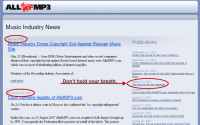 I'm still amazed that the RIAA didn't work with Napster back in the 1990s when Napster wanted to cut a deal with the recording industry to pay royalties. Instead of embracing a system that would distribute music without the need to produce, store, and ship a physical product, the RIAA adopted a punitive stance that hurt everyone involved. The RIAA managed to kill Napster (although the name returned), but that briefly opened the door to services such as AllOfMP3.com, a "broadcast" service in Russia that sold music worldwide without ever paying royalties to the artists. AllOfMP3 promised bulk downloads at a low price. The site operated under Russian broadcast law and, although apparently legal, was a thorn for the recording industry. Successful lobbying resulted in a trade agreement by which Russian authorities forced the site to close.
I'm still amazed that the RIAA didn't work with Napster back in the 1990s when Napster wanted to cut a deal with the recording industry to pay royalties. Instead of embracing a system that would distribute music without the need to produce, store, and ship a physical product, the RIAA adopted a punitive stance that hurt everyone involved. The RIAA managed to kill Napster (although the name returned), but that briefly opened the door to services such as AllOfMP3.com, a "broadcast" service in Russia that sold music worldwide without ever paying royalties to the artists. AllOfMP3 promised bulk downloads at a low price. The site operated under Russian broadcast law and, although apparently legal, was a thorn for the recording industry. Successful lobbying resulted in a trade agreement by which Russian authorities forced the site to close.
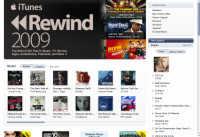 Apple's Itunes became large enough and powerful enough to dictate some new pricing terms. For older selections (the backlist), the price is 69¢. Most individual selections are priced at 99¢ and the most recent selections sell for $1.29. And Apple's tracks no longer come with digital rights management (DRM) or copy protection. Most CDs are priced in the $8 to $10 range. Apple lets you listen to 30 seconds worth of a selection.
Apple's Itunes became large enough and powerful enough to dictate some new pricing terms. For older selections (the backlist), the price is 69¢. Most individual selections are priced at 99¢ and the most recent selections sell for $1.29. And Apple's tracks no longer come with digital rights management (DRM) or copy protection. Most CDs are priced in the $8 to $10 range. Apple lets you listen to 30 seconds worth of a selection.
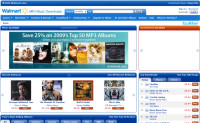 WalMart: Individual tracks 94¢ to $1.24. Despite WalMart's reputation as the low-price leader, these prices are not particularly impressive. WalMart allows you to listen to no more than 30 seconds worth of a track.
WalMart: Individual tracks 94¢ to $1.24. Despite WalMart's reputation as the low-price leader, these prices are not particularly impressive. WalMart allows you to listen to no more than 30 seconds worth of a track.
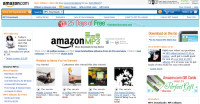 Amazon.com takes an interesting loss-leader approach by offering several free collections and other "99 best of ..." collections for $8 to $10. Individual selections are typically priced at 89¢ or 99¢, but complete CDs sometimes carry bargain-basement prices of $6 to $10. You can preview selections on Amazon, which means about 30 seconds. To purchase any of the low-priced collections, you need to use the Amazon downloader.
Amazon.com takes an interesting loss-leader approach by offering several free collections and other "99 best of ..." collections for $8 to $10. Individual selections are typically priced at 89¢ or 99¢, but complete CDs sometimes carry bargain-basement prices of $6 to $10. You can preview selections on Amazon, which means about 30 seconds. To purchase any of the low-priced collections, you need to use the Amazon downloader.
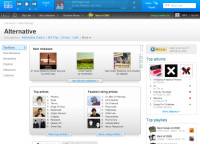 Does anyone allow you to listen to more than 30 seconds worth of a selection? The answer is yes and LaLa.com is an example. LaLa allows you to listen to the entire selection or an entire album, but just once. After that, you have to buy the album or you have to buy a download (many albums are priced at $7.50) or a "Web album", which gives you the right to play the album as many times as you want from the website. Web albums cost a dollar or two and if you decide you want the MP3 download later, you pay the difference between the Web album and the download price. Individual tracks usually are priced at 89¢. I recently found LaLa and I'm concerned that it will cost me more than a few dollars in the coming year.
Does anyone allow you to listen to more than 30 seconds worth of a selection? The answer is yes and LaLa.com is an example. LaLa allows you to listen to the entire selection or an entire album, but just once. After that, you have to buy the album or you have to buy a download (many albums are priced at $7.50) or a "Web album", which gives you the right to play the album as many times as you want from the website. Web albums cost a dollar or two and if you decide you want the MP3 download later, you pay the difference between the Web album and the download price. Individual tracks usually are priced at 89¢. I recently found LaLa and I'm concerned that it will cost me more than a few dollars in the coming year.
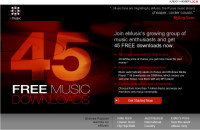 Emusic.com offers 45 free downloads to get started, but I found the service wanting and didn't renew my subscription at the end of the first year. Depending on the plan you purchase, you are granted "X" number of downloads per month. Use them or lose them. That's the first strike. I forgot about my downloads one month and lost them. Emusic granted me "replacement" downloads as a "one-time" balm. When it was time to renew, I found that the plan I had enrolled in would no longer be offered and the least expensive plan would double my monthly fee. Your cost will be about 50¢ per track. Previews are limited to 30 seconds.
Emusic.com offers 45 free downloads to get started, but I found the service wanting and didn't renew my subscription at the end of the first year. Depending on the plan you purchase, you are granted "X" number of downloads per month. Use them or lose them. That's the first strike. I forgot about my downloads one month and lost them. Emusic granted me "replacement" downloads as a "one-time" balm. When it was time to renew, I found that the plan I had enrolled in would no longer be offered and the least expensive plan would double my monthly fee. Your cost will be about 50¢ per track. Previews are limited to 30 seconds.
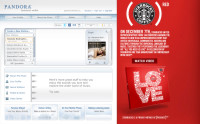 Pandora.com doesn't sell music. It's an Internet radio station that plays only the music you like. You define the artists you like and Pandora plays those artists. It also adds selections by artists with similar techniques. Pandora is free and you can create as many stations as you want. The free service includes visual and audio advertising, but I haven't found it to be intrusive and haven't yet felt the need to pay $36 per year to eliminate the advertising. If you encounter a CD you want to purchase, Pandora redirects you to Itunes or Amazon.
Pandora.com doesn't sell music. It's an Internet radio station that plays only the music you like. You define the artists you like and Pandora plays those artists. It also adds selections by artists with similar techniques. Pandora is free and you can create as many stations as you want. The free service includes visual and audio advertising, but I haven't found it to be intrusive and haven't yet felt the need to pay $36 per year to eliminate the advertising. If you encounter a CD you want to purchase, Pandora redirects you to Itunes or Amazon.
 MP3.com allows you to play a complete selection, but the site doesn't work very well and seems not to offer the opportunity to listen to an entire CD or to purchase one. I left after a few minutes of frustration.
MP3.com allows you to play a complete selection, but the site doesn't work very well and seems not to offer the opportunity to listen to an entire CD or to purchase one. I left after a few minutes of frustration.
 Napster.com. Same name, different service. Napster is now "A Best Buy Company", which may tell you everything you need to know. The offering isn't exactly clear. You appear to be able to download 5 files for $7 per month or 15 files or 60 files per month for $5 per month. Clearly, that's not right. Or maybe it's 60 files per year for $5 per month. If I can't understand the offering, I leave the site.
Napster.com. Same name, different service. Napster is now "A Best Buy Company", which may tell you everything you need to know. The offering isn't exactly clear. You appear to be able to download 5 files for $7 per month or 15 files or 60 files per month for $5 per month. Clearly, that's not right. Or maybe it's 60 files per year for $5 per month. If I can't understand the offering, I leave the site.
 How about kazaa.com? This is the operation that, when loading its download tool also loaded spyware and lots of other undesirable things. I tried it to see if the situation had changed and it certainly has. Every single selection I tried to play failed. End of story.
How about kazaa.com? This is the operation that, when loading its download tool also loaded spyware and lots of other undesirable things. I tried it to see if the situation had changed and it certainly has. Every single selection I tried to play failed. End of story.
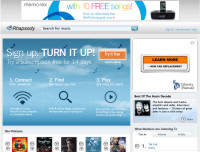 Rhapsody.com allows you to listen to 25 selections per month for free. If you want to listen to more, Rhapsody To Go allows you to listen to music anytime and anywhere for $15 per month or to listen to music from a Web browser for $13 per month.
Rhapsody.com allows you to listen to 25 selections per month for free. If you want to listen to more, Rhapsody To Go allows you to listen to music anytime and anywhere for $15 per month or to listen to music from a Web browser for $13 per month.
So there's no shortage of options these days. Pandora, LaLa, and Amazon seem to be the best choices for me, but one of the other services may work better for you.
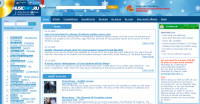 I mentioned AllOfMP3.com and its demise, but now there's another. MusicMP3.ru offers individual selections for 5¢ to 20¢ and entire CDs for $2-$3. A notice in the "Legal Info" section of the site says "All the materials on MusicMp3.Ru site are available for distribution through Internet according to license ЛС-ЗМ-05-84 of the Russian Multimedia and Internet Society. Under the license terms, MusicMp3.Ru pays license fees for all the materials subject to the Law of the Russian Federation 'On Copyright and Related Rights'. All the materials are available solely for personal use and cannot be used for further distribution, resale or broadcasting. Mp3-file is a low-quality music record. If you like particular album or song we recommend you to buy the original CD record."
I mentioned AllOfMP3.com and its demise, but now there's another. MusicMP3.ru offers individual selections for 5¢ to 20¢ and entire CDs for $2-$3. A notice in the "Legal Info" section of the site says "All the materials on MusicMp3.Ru site are available for distribution through Internet according to license ЛС-ЗМ-05-84 of the Russian Multimedia and Internet Society. Under the license terms, MusicMp3.Ru pays license fees for all the materials subject to the Law of the Russian Federation 'On Copyright and Related Rights'. All the materials are available solely for personal use and cannot be used for further distribution, resale or broadcasting. Mp3-file is a low-quality music record. If you like particular album or song we recommend you to buy the original CD record."
The "low quality" in this case 180Kbps or greater, sometimes VBR. By contrast, the TechByter Worldwide podcast is recorded at 32Kbps. "VBR" refers to variable bit rate, which is a method of recording sound that increases the bit rate for more complex passages while reducing the bit rate for less complex passages. The result is usually better sound from a smaller file.
Groovy, Baby!
A little-known Microsoft Office application makes it possible to share documents automatically with co-workers, whether they're located in your office, across town, or on the other side of the planet. Although it works well with technologies such as a Microsoft SharePoint server, no such server is required. All that's needed is the installation of an application called Groove on all the PCs that need to share information.
Groove is little known in part because of the price ($230 when purchased as a standalone application) and in part because the only Microsoft Office suite it's included with is Office 2007 Ultimate ($680, or $540 for an upgrade from a previous version.) This is the kind of application that many small businesses could use to great advantage, but one that most small-business owners probably won't consider because of the cost. A company with 20 employees would be looking at $4600 to add Groove. Yes, Microsoft offers incentive pricing for multiple licenses, but the expense would still be considerable.
Despite the advantages Groove would bring, most business owners probably won't believe that the application will bring enough efficiencies to outweigh the cost. But they might be wrong about that.
How Do You Share Documents Now?
Maybe you have a shared drive on a corporate server that's behind your firewall. Employees who are behind the firewall can get to the files, but collaborators from other firms probably cannot. It may be that even your own employees can't when they're working from home.
Or perhaps you keep the files on your computer and, when you need to share them, you e-mail a copy. What happens when several people make changes to the document? Have you ever used an old version of a file instead of the latest version?
These are the kinds of problems that Groove attempts to solve.
Security and Sharing
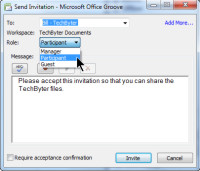 When data moves from one Groove workstation to another, it is automatically encrypted (196-bit encryption) and the only way for another user to join a Groove workspace that you've established is for you to invite that person.
When data moves from one Groove workstation to another, it is automatically encrypted (196-bit encryption) and the only way for another user to join a Groove workspace that you've established is for you to invite that person.
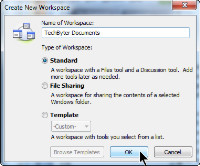 Creating a new Groove workspace is easy. A standard workspace allows online discussions and enables other useful features while a file-sharing account creates only the ability to synchronize files.
Creating a new Groove workspace is easy. A standard workspace allows online discussions and enables other useful features while a file-sharing account creates only the ability to synchronize files.
Although any security system can be defeated, the safeguards used by Groove are sufficient to create confidence in the system.
You may be concerned about excessive use of bandwidth, particularly if you're traveling and the Internet connection isn't particularly robust. Groove helps here by transmitting only the changes you make to a document. Add one sentence to a 20MB Word document that contains a lot of images and just that one sentence, along with some instructions for importing it into the document, will be sent to other Groove users.
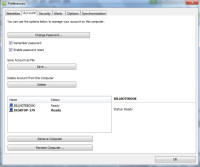 As the manager of the account, you have control over how the account is used. Other users can be given management privileges, standard user privileges (the default), or limited guest privileges.
As the manager of the account, you have control over how the account is used. Other users can be given management privileges, standard user privileges (the default), or limited guest privileges.
Sharing files from a SharePoint folder is a bit more complicated. The user who is local to the SharePoint server must check out the file. Groove then shares the file with all Groove users who are members of the workspace. When changes are made by any of the users, the changes are reported back to the user who checked out the SharePoint file. To complete the process, that user needs to check in the file to the SharePoint server.
To share files between several of your own computers, Groove allows you to create a file that creates the same user on multiple machines (home, office, and notebook, for example). Files in your Groove workspace will automatically be shared and synchronized.
Because every file is stored on every participant's computer, not on a centralized server, I think it's a good idea to create a faux centralized server. If one of your computers remains on all the time, an office computer for example, it could be the "owner" of the account. When changes are synchronized with that machine, the updates will be automatic to all of your other computers whenever they're connected to the Internet.
Other Features
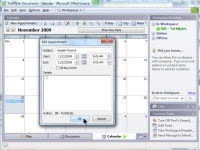 Although it will never compete with an Outlook calendar, Groove has its own built-in calendar function that can be used interactively by all online participants.
Although it will never compete with an Outlook calendar, Groove has its own built-in calendar function that can be used interactively by all online participants.
A chat option that is internal to Groove is also available or you can use Groove to launch a Microsoft Communicator chat session and from there you could share your desktop with other participants.
There's even a chess game, although it seems to have at least one down-side: Once you've added it to the interface, there's no way to get rid of it.
 Bottom Line: Groove is a useful, but pricey, collaboration tool.
Bottom Line: Groove is a useful, but pricey, collaboration tool.
Were it not for the price, Groove would easily earn a 4-cat rating. You won't find an easier way to share files with others regardless of their location. The only danger in trying the 30-day free trial of Groove is that you might decide, at the end of the trial, that you can't live without it.
For more information, visit the Microsoft Groove website.

No cows were injured or painted in the production of this graphic.
Short Circuits
Nokia vs Apple and Apple vs Nokia
Nokia sued Apple so Apple sued Nokia. Now Now Nokia is suing Apple again. In October Nokia claimed that Apple stole its technology for the Iphone. Apple then accused Nokia of stealing its technology. Now Nokia says that Apple is improperly using technologies covered by 7 patents that cover technologies found in many Apple products.
Nokia wants the US International Trade Commission to block Apple from importing its products, many of which are made in China, into the United States. If the move is successful, Apple could be prohibited from selling Iphones, Ipods, and Macintosh computers in the US.
Apple is asking for an injunction against Nokia that would bar the Finnish company from selling its products in the US.
It doesn't take a genius to see that the customers of both companies would be the real losers, but the corporations persist in their idiocies.
Apple and Nokia are battling mainly over smartphone technologies. Apple has a hit with the Iphone and Nokia has seen its sales drop because it has nothing like the Iphone. Instead of winning in the marketplace, Nokia's goal apparently is to win in the court room.
The phone maker now claims that Apple has stolen a wide range of cell phone and computing technologies. The companies could bring an end to the nonsense by simply cross-licensing their various technologies.
Or would that be too easy?
No Retrospectives Here
The past week has featured a non-stop series of articles from the major media pundits with titles such as That Was the Year That Was, Ten Technologies that Touched Your Life in 2009, The Ten Best Iphone Apps, and one that really surprised me: Stupid Tech Tricks of 2009. Bah. Who cares?
I have always detested these programs; when I worked in radio, I tried to avoid writing them and when they're on radio or television, I avoid them. The premise usually seems to be something like this: "Let's see ... we have to fill an hour. We have 50 minutes of recorded sound nobody cared about when we ran it the first time, so we'll add 10 minutes of pithy dialog and run it again."
These are easy to write because all you have to do is copy and paste the stuff you wrote before. But ultimately they're meaningless.
So not now. And not here.


 The author's image: It's that photo over at the right. This explains why TechByter Worldwide was never on television, doesn't it?
The author's image: It's that photo over at the right. This explains why TechByter Worldwide was never on television, doesn't it?
